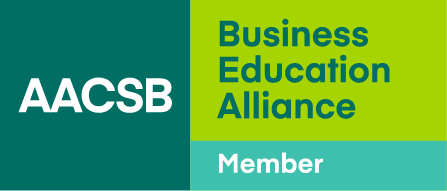The Business School's Glass Ceiling
THERE STILL AREN'T enough women at business schools. While schools have made progress over the past five years bringing in more women as students, faculty, and administrators-women are still underrepresented at virtually every level. Not only that, their salaries lag behind those of their male peers.
While the gains are to be applauded, the inequality still needs to be recognized and addressed. When women are not well-represented at all ranks and in all roles in the business school, students do not see diversity reflected in either their faculty or their school leaders. Not only that, the institution suffers, because it will not benefit from the diverse perspectives and approaches that lead to better decisions and better results.
To discuss the issue of increasing
gender diversity, last August we convened
a panel of senior business school
leaders at the American Marketing
Association's Summer Academic Conference
in Boston. There we examined recent data collected by AACSB International
and discussed ways business
schools could address gender disparity
in their leadership ranks.
Some of the numbers are encouraging. Compared to five years ago, AACSB member schools have increased the percent of women at each faculty rank, with the largest increases being at the level of dean and assistant dean. Yet, overall, women are still underrepresented, according to comparative data that tracks a subset of AACSB member schools over a five-year period. The chart below shows the rough percentages for the number of women acting as deans, associate deans, and department chairs in 2018. The low number of female department chairs is significant because leadership often begins at the department chair level.
But one of the most interesting data points shows that women fill 66 percent of the assistant dean positions, the only level at which women are more numerous than men. However, these deanships are disproportionately at the undergraduate level-which tends to be less strategically important for business schools, as it brings in less revenue than programs at the graduate level. And anecdotal evidence suggests that while assistant deans are often responsible for the day-to-day, internal work of the business school, they have less impact on setting strategy for the school. Thus, even when women have leadership positions, their power is limited.
One reason women are not reaching the higher leadership ranks is that they are not progressing to full professors at the same rate as men. While the percentage of women at each rank has increased slightly over the past five years, there are fewer women at each ascending level. This indicates a narrowing funnel for women seeking leadership roles.
In terms of compensation, the picture for women is no brighter. Despite more than 50 years of calls for equal pay for equal work, women still make significantly less than men at all levels, according to AACSB data. Specifically, women across all ranks of business school faculty earn 87.3 cents for each US$1 earned by men. The good news is that new women hires are receiving more equitable pay—although this means the gap is even greater for faculty who have already been in the workforce for some time.
This is the glass ceiling at work: Women are not only present in lower numbers than men, they are hitting barriers as they progress through the stages of leadership, and they're earning less at every turn. These discrepancies are not likely to change unless we identify and address some of the roadblocks women face in their careers.
OBSTACLES IN THE WAY
What are some of these roadblocks holding women back? We identified eight potential hindrances during our panel discussion at the AMA conference. We call them ""potential"" hindrances because they do not apply to all women at all schools-and they might apply to minorities and some men as well. But all of them should be considered as we strive toward gender equity:
Women negotiate less. According to
research by Hannah Riley Bowles, Linda
Babcock, and Lei Lai in Organizational
Behavior and Human Decision Process,
women are likely to feel social disincentives
to negotiate because they fear
being seen as aggressive. They are also
less likely than men to negotiate unless they are signaled that negotiations
are acceptable, according to research
published in Management Science by
Andreas Leibbrandt and John A. List.
Some organizations have programs in
place to address this issue. For instance,
in January of 2018, the Massachusetts
Office of State Treasurer and the American
Association of University Women
launched a statewide program called
""Just Ask!"" Each year, the program expects
to train 5,000 women in the art of
salary and benefit negotiation.
Women operate ""by the book."" Women are less likely than men to apply for a position unless they meet all the stated qualifications, which they tend to take literally. In addition, women faculty more often report ""a lack of transparency and clarity regarding promotion criteria,"" write Kimberly Buch and co-authors in Change: The Magazine of Higher Education. This means that women don't reach as quickly for jobs at the next level and they progress more slowly through the ranks.
Women receive less enthusiastic recommendations. In the peer-reviewed world of science and academia, letters of recommendation serve an important gate-keeping function for positions, promotions, awards, and recognitions. However, in a piece published in Discourse & Society, Frances Trix and Carolyn Psenka find that letters of recommendation written for women tend to be shorter than those written for men and more often describe women as communal rather than agentic (that is, less likely to be competitive). The letters also contain more references to the women candidates' teaching than their research, whereas letters of recommendation for men focus on their research. In addition, the letters contain more instances of language that might raise doubts about the candidates.
Women aren't good at self-promotion. While many men enjoy talking about their achievements, women shy away from being boastful or overconfident, and often they don't claim personal credit, writes Deborah Tannen in Harvard Business Review. This has an unexpected effect in terms of research citations. While citations often are viewed as gender-neutral, men are more likely than women to reference their own work, Dalmeet Singh Chawla notes in a piece in Nature. This can skew the impact of citations. Thus, the tendency of women to be modest about their accomplishments may prove a disadvantage to female candidates seeking higher ranks.
Women receive lower teaching
evaluations. There is rising evidence
that women, and certain other groups,
suffer a bias in their teaching evaluations.
Lillian Macnell, Adam Driscoll,
and Andrea Hunt published a study in
Innovative Higher Education, showing
what happened when they manipulated
the implied gender of the instructor of an
online course. They found that women
received significantly lower evaluations,
even on criteria that were identical. Ben Schmidt reviewed teaching evaluations
from Rate My Professor and found that,
across all disciplines, men and women
are often described by gender-stereotypical
language. (See the interactive chart.)
Women lack mobility. Many schools believe that the open market is an efficient way to make salary adjustments, but they might be wrong. A study by Kelly Ann O'Meara, John Fink, and Damani Khary White-Lewis in NASPA Journal About Women in Higher Education found men and full professors are more likely to receive outside offers that will lead to more competitive salaries. The researchers suggest that women face several barriers to receiving such offers: They are underrepresented at higher ranks, receive fewer scholarly accolades, negotiate less, and face continuing implicit bias in the hiring process.
Women are more likely to be caregivers. Family and medical leave is protected under law in many countries, but when employees take leave to become caregivers, their institutions often interpret this as a signal that they are less committed to their careers. Since women are more likely than men to take family leave, their absences might negatively affect their career advancement.
This is particularly true for parental leave, which uniquely disadvantages female faculty relative to male faculty. Research by Heather Antecol, Kelly Bedard, and Jenna Stearns, which was published by the IZA Institute of Labor Economics, found that the adoption of gender-neutral tenure clock-stopping policies substantially reduced female tenure rates while increasing male tenure rates, thereby widening the gender gap. Specifically, their data show higher rates of top-tier journal publications for men compared to women, indicating that men may use the clock-stoppage time strategically to be more productive in their research.
Women pay a ""gender tax."" To achieve diversity on committees and teams, business school administrators intentionally recruit women and minority members. Thus, women and minorities pay a ""gender"" or ""minority"" tax because of their more limited numbers, particularly as they achieve higher ranks. Research by Cassandra Guarino and Victor Borden in Research in Higher Education confirms that women perform more service than men; the authors also found that women's service is more likely to be internal to the department, college, or university, and less likely to serve the profession or the community. Women may be asked to do more, may have a harder time saying no, or hold a different view of service obligations than men.
WHAT COULD CHANGE
In our AMA meeting, we were happy to hear schools share examples of how they are addressing gender equity. For instance, some are choosing not to pay ""disloyalty bonuses"" to professors who seek competing salary offers. While it's unlikely that the potential hindrances will ever be eliminated completely, we identified several actions that administrators could take to lessen some of the effects of gender disparity:
Commit to the goal. Leaders should
openly profess a desire for equity,
acknowledging that historical practices
or processes may have unintentionally
created disparities. When they commit
to continuous process improvement,
they can focus on identifying future opportunities
rather than assigning blame
or defending the past.
Assess current representation. Leaders should know where their schools and departments stand. What is the gender representation for faculty across the business school, in various Business education (71.4%) Manufacturing and tech management (66.7%) Business communications (66.3%) academic disciplines, and in each degree program? When hiring, administrators commonly focus on departmental-level needs, but they also should consider diversity goals that improve representation at the program level.
Assess career progression. Leaders should analyze how men, women, and minorities progress through the academic ranks at their schools. Is adequate feedback given to faculty so that they know when they meet promotion criteria? If certain groups are taking longer to progress, does the school have faculty development programs that explicitly target those who have spent extended time as associate professors?
Examine pay gaps by gender. Are there salary differences between men and women? Are there differences in how research, travel, and other compensation are funded for men and women? Are pay differences related to performance or to other criteria?
Examine criteria for assignments
and evaluations. Leaders should
determine if service commitments
or teaching assignments are allocated
disproportionately to women
or minorities. Administrators also
should consider whether they need
to adjust their criteria for teaching
and research.
We believe that if administrators are willing to examine the data, they can gather a wealth of information about how they're doing on gender parity and determine if there is need for action at their institutions.
Calls for systemic change to achieve gender equity are not new; we have long been discussing the need to improve the career prospects of women in academia. But it is still daunting for individual schools, and individual departments, to move forward with changes.
Nonetheless, we believe meaningful progress can be achieved when administrators evaluate their situations and address the existing hindrances. The good news is that the schools that are the first movers on gender parity are most likely to see the greatest benefits. They'll do a better job of recruiting and retaining faculty, recruiting students, improving long-term alumni development—and changing academia for the better.
Pam Scholder Ellen is an associate professor of marketing and associate director of WomenLead at Georgia State University's Robinson College of Business in Atlanta; June Cotte is the Scott & Melissa Beattie Professor in Marketing at Western University's Ivey Business School in London, Ontario, Canada; and Joseph K. Goodman is an associate professor of marketing and logistics at the Ohio State University's Fisher College of Business in Columbus.
This article originally appeared in BizEd's March/April 2019 issue. Please send questions, comments, or letters to the editor to [email protected].
Related Reading
For a look at how gender disparities affect public universities in Massachusetts, read ""Tracking Gender Disparity Among Academics.""
"



